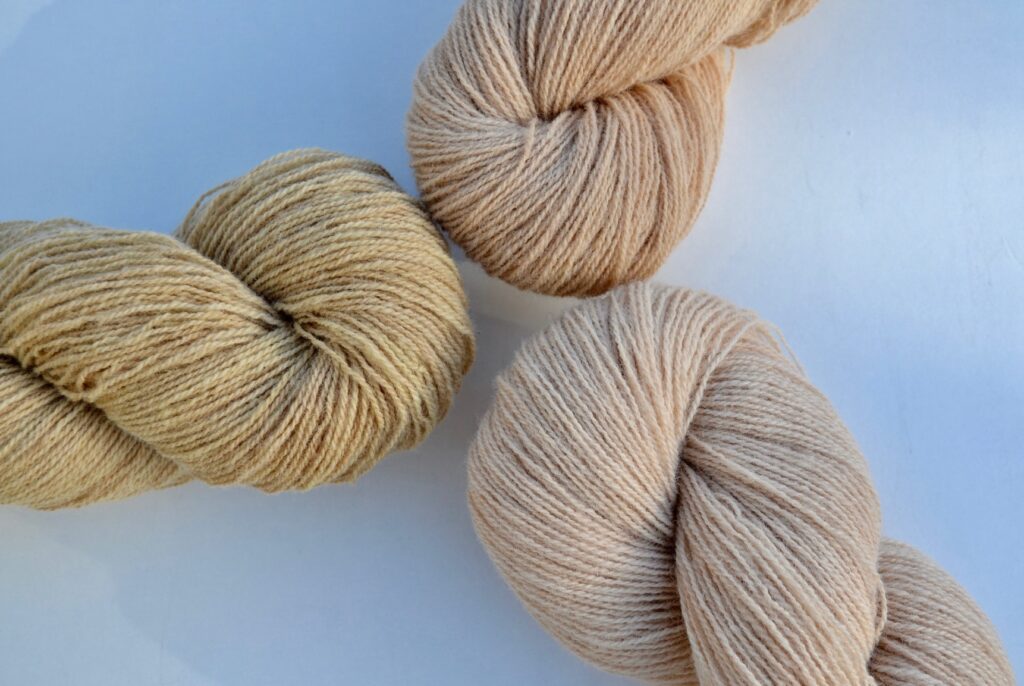Cutch extract has a huge tannin content, making it almost universally useful to the natural dyer. It can be used both as a mordant and a dye.
Cutch is an extract from the acacia tree, and it has almost as many applications as it has names: cutch, catechu, kath, seesiat, kasu, cacho, terra japonica….
The acacia tree has the Latin name Senegalia catechu, but was formerly known as Acacia catechu. The tree’s native range stretches through the southern Himalayas through India, Burma, Thailand and into China. But it’s also cultivated, primarily in India.

In order to extract the dyestuff from acacia trees, the wood is boiled in several shifts of water. In the end, the water is evaporated, leaving the reddish brown extract, which is finally ground to a powder.
The extract contains several different compounds, and that’s why it’s useful in several different ways. 55-60% of the extract is different types of tannins like gallocatechin (the kind of tannin found in pomegranates and green tea). The rest are dye molecules from the family of compounds called flavonols. One example of a flavonol is the dye quercetin, which is yellow.
The tannin content means that cutch can be used for anything in dyeing where tannin is normally used. So it is useful as a mordant for plant fibers, but also as a dye when combined with iron, to give grey to black on plant fibers.
The flavonol content means that cutch is also useful as a dye on alum mordanted wool.
CUTCH AS A LINEN MORDANT
My standard method for mordanting linen is 5% pure tannin, then alum – I use 10%, but my trusty Danish book on dyeing (Esther Nielsen, Farv med planter på silke, hør og bomuld) says that you can go much higher. In order to test the cutch extract, I’ve tested it as a replacement for pure tannin.
I treated two 150 g (5.3 ounce) skeins of my pure linen yarn, Midsommer: one with 5% pure tannin, so 7-8 g (0.28 ounce). The other one with cutch extract, the weight said 9 g (0.32 ounce). In both cases, I dissolved the powder in boiling water, put it in a bucket, and filled with hot tap water. The linen skeins were allowed to cool off in the solutions over night.
Then, I mordanted both skeins with 10% alum, and dyed them both in one dyepot of madder. I don’t know the exact strength of the dye, it had been used for something else already, but still had color in it.
The result: two beautiful skeins of red linen, with the same color intensity but very slightly different tones. The pure tannin skein (left) has a clear red, while the cutch skein (right) has a sligtly browner red color.

Both colors look good to me, so the conclusion is yes: cutch is very well suited as a linen mordant.
CUTCH AS A WOOL DYE
Cutch is also useful as a dye. Above, I used the extract in a cold bath, and that is fine when tannin is what you’re after.
As a dye, cutch should be used in a hot dyebath (so just the usual way of using natural dyes, really). Here, I’ve used it on wool that was pre-mordanted with 10% alum.
The dyebath was made of 10 g (0.35 ounce) of cutch extract, and I used it on 100 g (3.53 ounce) skeins of my pure wool, Fenris. I dyed 3 skeins, one after the other, so a total of 300 g (10.58 ounces) of wool dyed with just 10 g of extract. For each skein, I heated it in the dye bath, left it on for about an hour, then let the skein cool off in the dyebath overnight. I then let the yarn hang dry without washing it first, to let the color oxidize (several sources agree that the color from cutch deepens with oxidation). Once oxidized (and dry), I washed the yarn.
The first skein (left) came out with a quite yellow beige, whereas the second (top) and third (bottom) came out much more reddish-brown.

CUTCH AS A LINEN DYE
After dyeing 300 g (10.58 ounces) of wool in my dyebath, I wondered if there was any more tannin left. I heated it with 150 g (5.3 ounces) of linen, then treated the skein with a little bit of iron. The result was a good grey, medium strength, so the bath clearly still had tannin to offer. Cutch really is a powerful extract: its dye and tannin content goes a long, long way.

